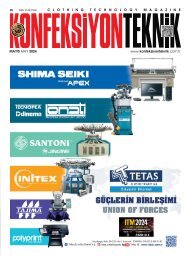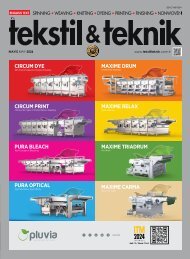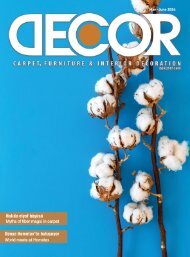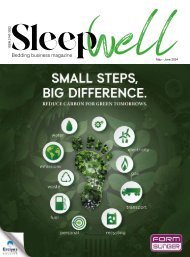You also want an ePaper? Increase the reach of your titles
YUMPU automatically turns print PDFs into web optimized ePapers that Google loves.
78
PANORAMA
KONFEKSİYON TEKNİK
MAYIS | MAY | 2020
SGS explains how quality
is the way to succeed in the growing
sustainable fashion market
Consumers’ behaviors in purchasing and in using
products have changed in pursuit of a sustainable
lifestyle. For sustainable fashion to succeed as a business
model, products must meet or exceed both
market regulations and consumer expectations. To
demonstrate this, products must be verified to demonstrate
their quality, durability and versatility. Jean-Paul
Gaultier’s announcement of his retirement
from the world of haute couture, partly because of
the “ridiculous” levels of waste produced in fashion
industry he had attacked in 2019, signals a shift
towards more sustainable fashion choices. This phenomenon
is not only industry based. Consumers are
searching for sustainable products – 19% of fashion
related online searches now incorporate terms such
as environment, sustainability and ethics. Consumer
demand is increasing as a fuller understanding
of some industry practices on the environment
become better known. WRAP estimates that the UK
alone disposes of GBP 140 million of clothing into
landfill every year. On a global scale, that could
mean around USD 500 billion of value is lost every
year due to clothing underutilization, according to
the Ellen MacArthur Foundation. At the same time,
biodegradable and non-biodegradable chemical
substances carried on disposed clothing are being
discharged into the environment, leading to calls
for reductions in the use and disposal of harmful
chemicals when manufacturing textiles and
footwear. Underutilization of clothing also indicates
significant waste of production costs in terms of
water, energy, chemicals, labor, and so on. While
consumers are calling for more sustainable clothing
options, they still want high quality products. For
manufacturers, the model for sustainable clothing
is successful because it relies on fewer styles that
cover a variety of outfits and that can be worn for
multiple purposes. High quality products last longer
and so consumers are happy to pay more. Better
quality and less quantity also mean lower incidental
costs for manufacturers, in terms of shipping,
storage, maintenance, etc. and a reduction in input
costs (water, chemicals, electricity, etc.). Creating
clothing in this fashion allows manufacturers to
ultimately increase their margins. To succeed in
the sustainable clothing market, products need to
conform to, or exceed, market regulations and consumer
expectations. Happy consumers will have
greater loyalty to a brand that improves its reputation.
SGS offers a full range of testing and inspection
solutions to help manufacturers and brands gain
the most from their textile and footwear products.
Their solutions ensure a high level of conformity for
businesses, creating products that satisfy consumers
and demonstrate best commitment on environment
and sustainability.

















